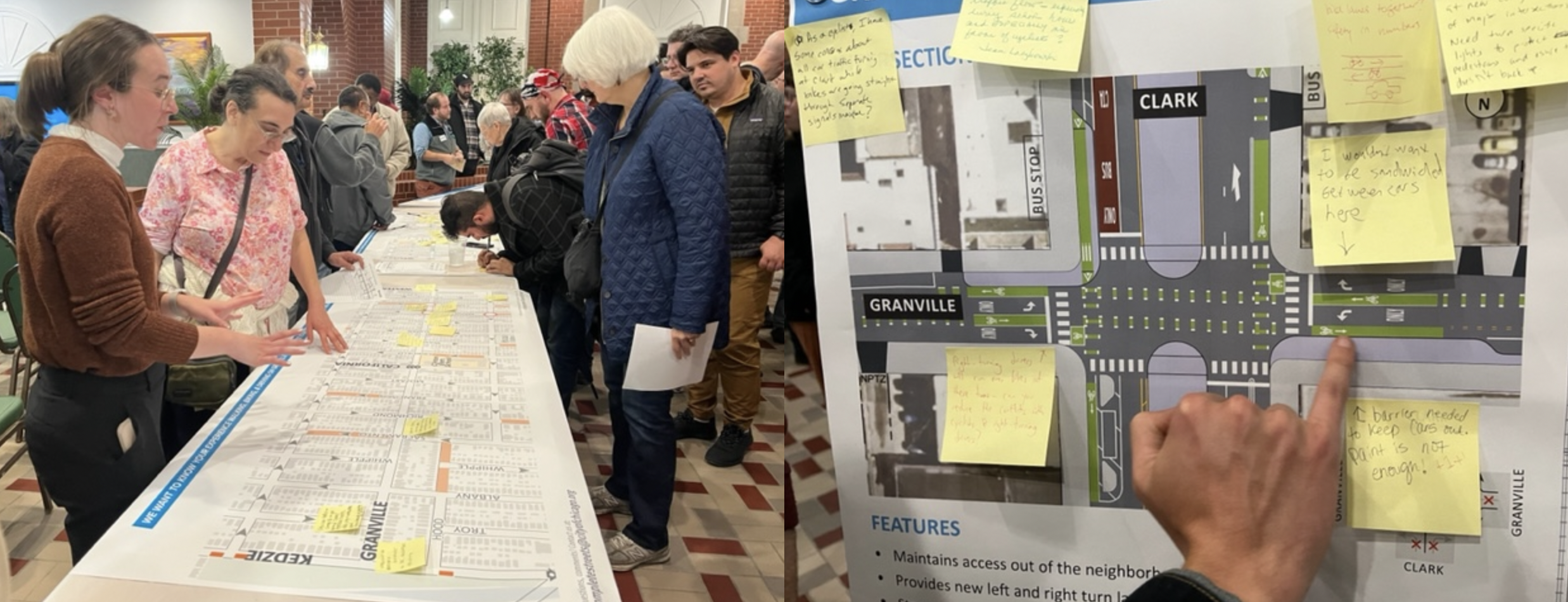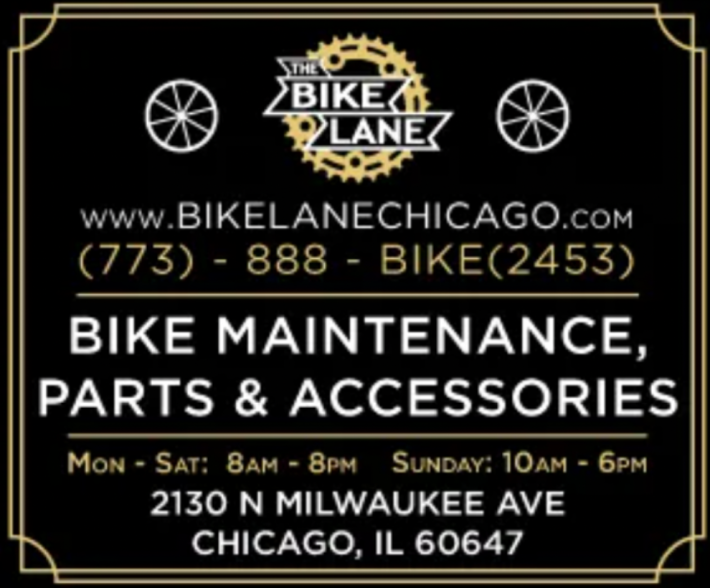
Judging from last month's story from Edgewater's Not In My Back Yard newspaper News-Star titled "Neighbors Rally to Stop Granville Greenway," you'd assume the entire neighborhood is dead-set against the proposal. In the very first paragraph, editor Ronald Roenigk, whose office happens to be just north of Granville, stated that local Ald. Leni Manaa-Hoppenworth (48th) is "at odds with her ward over a new bike greenway." Really, all roughly 50,000 of her constituents are against the project? Read Streetsblog's full dissection of Roenigk's piece of work here.
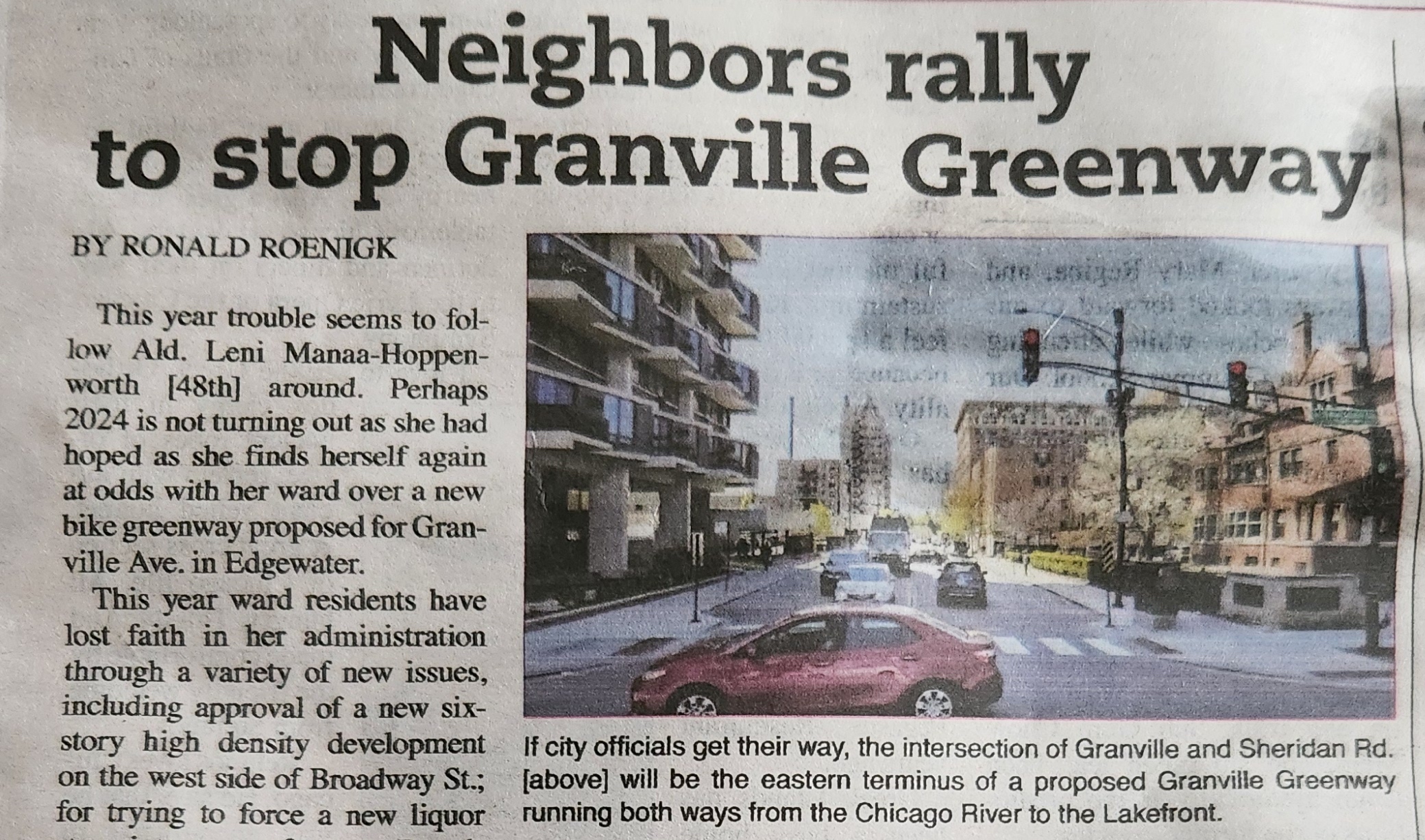
But if last night's extremely well-attended community meeting at Misericordia, 6300 N. Ridge Ave., is any sign, there actually seems to be plenty of support for the Granville proposal. For starters, it's not strictly a "bike greenway." True, it would make Granville Avenue (6200 N.) basically the only marked east-west cycling route in this part of town, in the roughly two-mile stretch between bikeways on Pratt (6800 N.) and Berwyn (5300 N.) avenues.

But more importantly, the proposed changes to Granville would address the current problem that the avenue is a residential street that many drivers use like a highway. According to the Chicago Department of Transportation, it has three times the traffic volume of a typical non-arterial street in our city, and it's in the top 10 percent of Chicago residential streets for crashes. A few blocks on the avenue are in the top one percent of residential blocks for crashes, citywide. That's not surprising, since CDOT says it's common for motorists on the avenue to speed at more than 20 miles over the 30 mph speed limit, with drivers clocked going as fast as 70.
As such, CDOT proposes to add speed humps, traffic circles, sidewalk extensions, and/or raised crosswalks, and implement other strategies proven to help calm traffic. But the main reason Granville has so much traffic and speeding, and so many crashes is because it's a rare residential street that is two-way for miles. It's currently a direct route for drivers in both directions, for nearly three miles between Kedzie Avenue (3200 W.) and Sheridan Road (1000 W.)
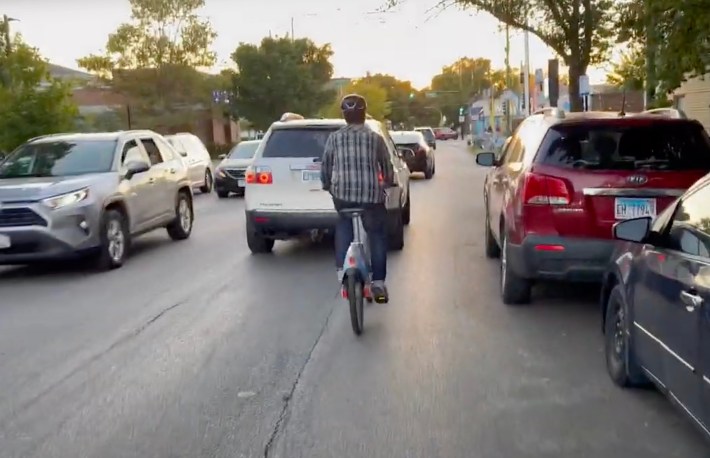
So it's no surprise that many crosstown motorists use Granville as a "cut-through" route to avoid congestion on nearby arterials Devon (6400 N.) and Peterson (6000 N.) avenues, where they're supposed to be driving. But that's particularly dangerous for people walking and biking to the four schools and many parks on Granville.
In response to the crash epidemic on Granville, CDOT proposes to convert some stretches of the current two-way avenue to one-way-only for drivers. However, these segments would also get "contraflow" bike lanes, which make it legal and safer for cyclists to travel in both directions.
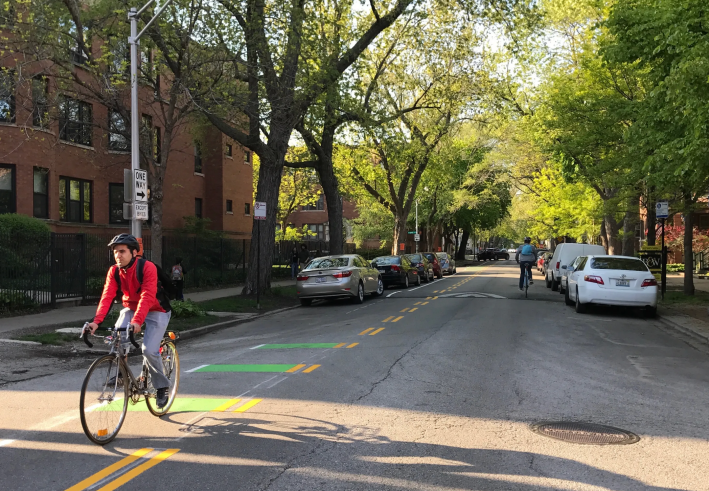
Perhaps 200 people showed up for last night's public hearing on the proposal. There were a few naysayers who interrupted speakers during the presentation, despite being repeatedly asked to save questions for the open house session afterwards, since time at the venue was limited. But my sense was that at least around half, possibly a majority, of attendees liked what they heard, especially the parents of school kids on Granville who are endangered by the status quo of heavy crosstown car traffic and speeding.
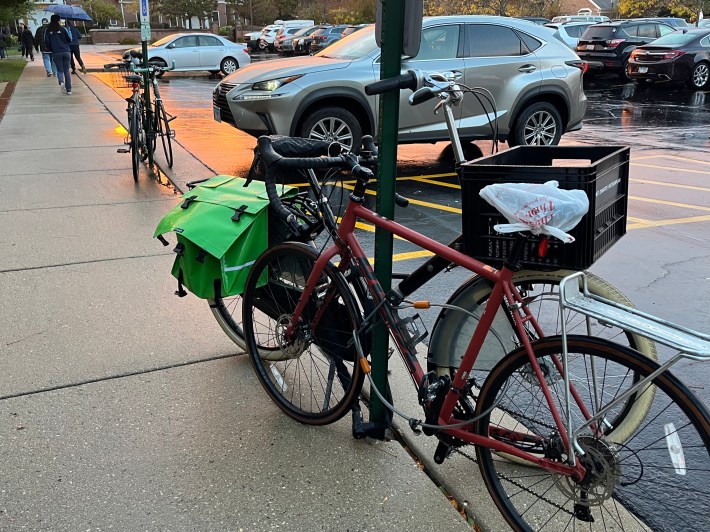
CDOT Complete Streets Director David Smith opened the presentation. "When we look at what's happening on Granville, it's pretty astounding," he said. "When you start looking at the number of traffic crashes that happen on Granville, it's by far greater than any other residential street within the area. it's not even close... It's critically important from our perspective that we address those issues and make Granville a safer and more accessible street." He listed these four project goals:

• "Reducing the number of non-local vehicles on the street"
• "Encouraging slower and more predictable speeds"
• "Better organizing Granville"
• "Enhancing accessibility – making sure that people [using] all modes of transportation, of all ability levels, and all ages can get around the community, use Granville as an asset and get where they need to go."
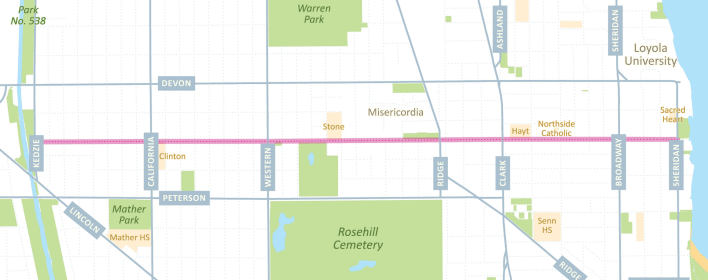
Next, local elected officials took the mic. State Senator Mike Simmons (7th-D), sits on the Senate Transportation Committee, which doesn't have jurisdiction over Granville. "I'm here to hear what neighbors have to say about the project," he said. "I want to hear what the priorities are for safer roads."
"l'll say that when the department reached out to us, really expressing what the concerns have been as far as safety, some of the things that they're showing you are really compelling in terms of how bad it is," said Ald. Andre Vasquez (40th). "This past week we actually had a cyclist get hit on Ravenswood [Avenue, 1800 W.] and Granville... We didn't get too many details on how they're doing. So we want to make sure that whatever's done here takes into account the infrastructure and also behavior of drivers."

Ald. Manaa-Hoppenworth represents the stretch of Granville between Clark Street (about 1600 W. there) and the lakefront. "The biggest priority, I just want to stress, is that this is about safety," she said. "About your safety, and especially about folks that are older adults, and students who use Granville, no matter how you get around."
She noted that former 48th Ward alder May Ann Smith, who recently passed away, was known for installing speed humps and traffic circles. "She heard from the community that they did not want to be a cut-through neighborhood for [drivers], and they wanted to be safe crossing their streets. So this is a continuation of that conversation."
Next up was 50th Ward Ald. Debra Silverstein, who said the proposal only affects her district at Granville and Western Avenue (2400 W.) "But as the alderwoman, I really want to hear your feedback," she said.

Next, CDOT Complete Streets Planning Manager Brad Huff discussed the details of the proposal. "When we dive into Granville, the first thing that comes up is that Granville really accounts for a disproportionately large share of crashes on streets in the neighborhood, but also compared to other neighborhood streets throughout the entire city," he said. He added that his department has conducted traffic counts and speed counts at over 20 intersections on Granville, and has had many discussions with block clubs, schools, and other stakeholders along the corridor.
"Over the last five years, we've seen [664] total crashes on Granville," Huff said. "And over 180 people have been injured in these crashes." He added that of all the injury crash cases occurring on non-arterial streets in the area, half of them were on Granville. 20 percent of crashes on Granville were during school drop-off and pickup times. Notably, traffic crash reports showed that 88 percent of drivers who caused serious injury crashes on the avenue do not live in the area.
Watch the entire presentation on this video, including details on what's proposed at major intersections, on this video posted by the 40th Ward. See a gallery of renderings of the proposed changes at the bottom of this post.
John Holden, a former City Hall employee who said he bikes often, was one of the project skeptics who spoke out during the presentation. "I'm very concerned about this, because I live on a street that's likely to be impacted if they go through and make some of these changes that they're proposing," he told me during the open house session. "I also feel like they have not presented nearly enough information for us to get a good handle on where the problems are."
"I care a lot about people being safe and people not getting hit, especially kids in front of schools getting hit by reckless drivers," explained fellow meeting attendee Ethan Saltzberg when asked why he showed up. He said he was "terrified" to hear during the presentation that CDOT has observed drivers going as fast as 70 mph on Granville. "I hope that something like this can help, and I'm curious to see how they're going to do it."
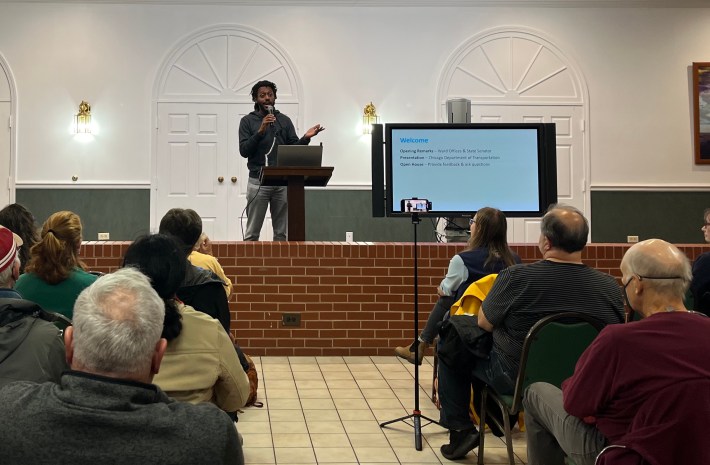
Sen. Mike Simmons also told me after the presentation that he was intrigued by what was discussed. "Some of the data that we heard is concerning," he said. "So this is a project that I want to keep an eye on in terms of what the design looks like. I like the aggressive timeline. It shows that they're taking it seriously."
Megan Sauter, who showed up for the hearing with her young daughter, who attends one of the schools on Granville, said she was pleased with what she heard. "We bike to school most of the time," Megan said. "It's just harrowing going down Granville, how fast some of the drivers go by us. She just went on her first Kidical Mass ride, going solo, and she wants to be able to bike [independently] to school. She cannot do that right now with the way Granville is."
Gallery of renderings of the proposed changes
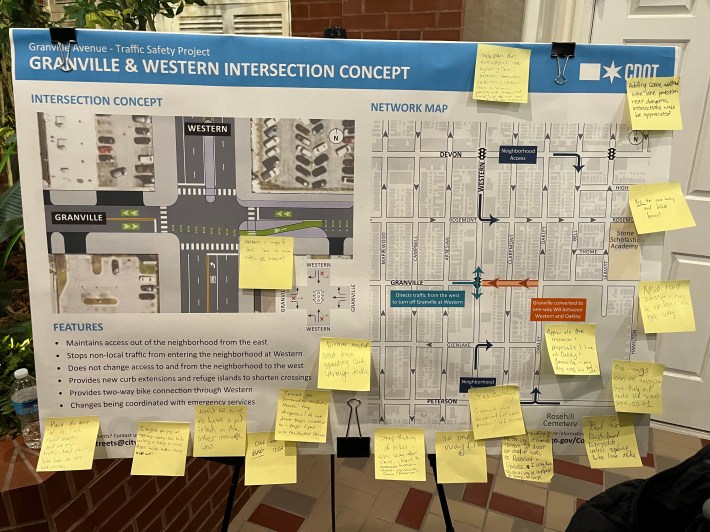
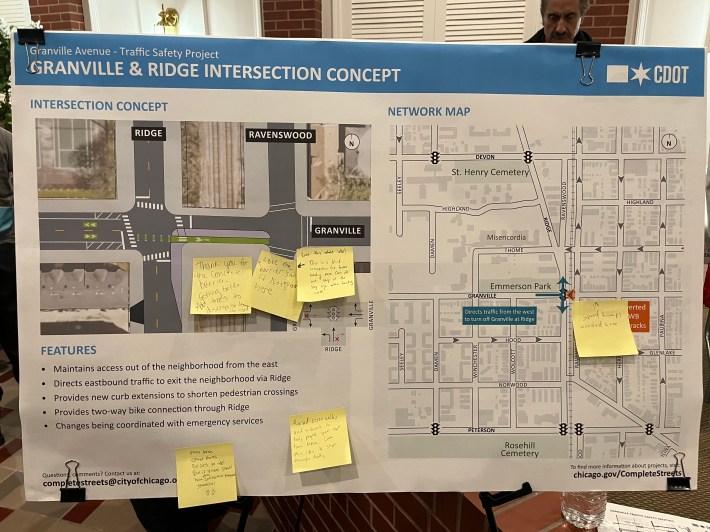

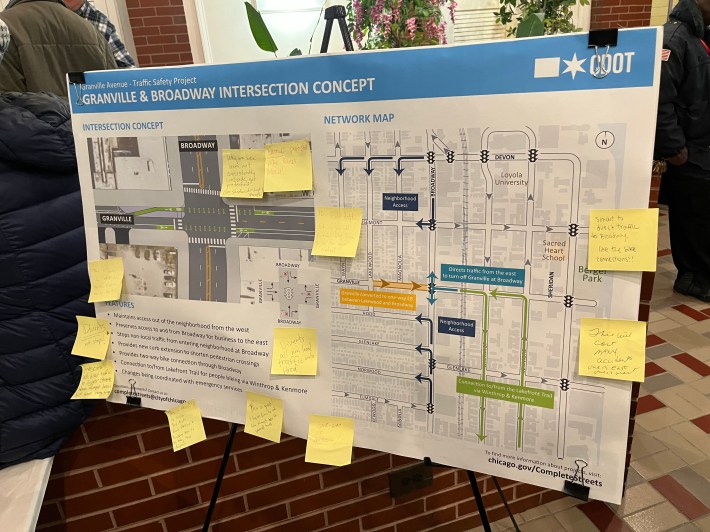
Visit the main website for Granville Avenue Complete Streets here.
Check out images from last night's presentation here.
Look at more open house posters here.
See images of the street network here.
Check out the corridor plot here.

Did you appreciate this post? Please consider making a tax-deductible donation, to help keep Streetsblog Chicago's sustainable transportation news and advocacy articles paywall-free.
